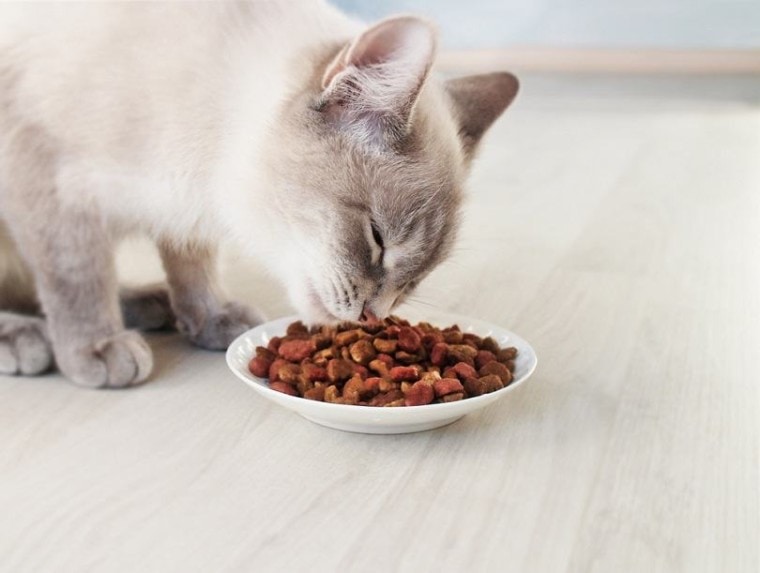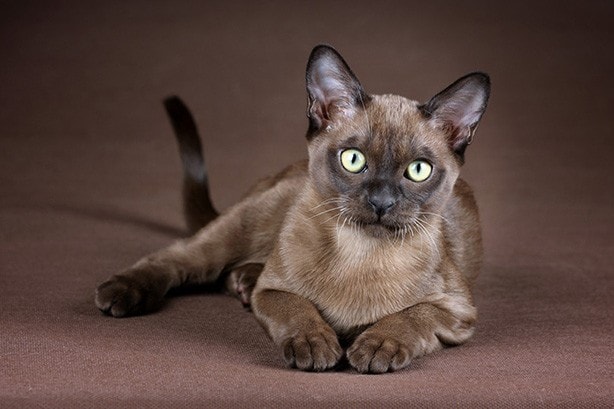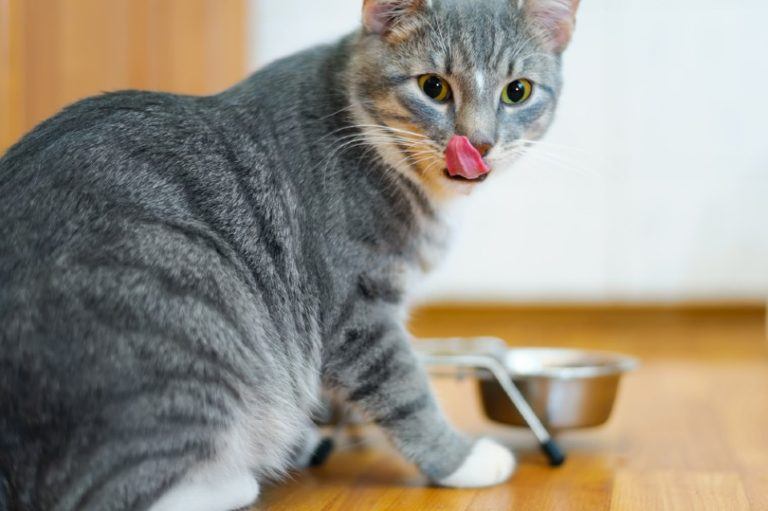
As cat owners, we’re always trying to do our best when it comes to our feline friends. One of the most effective ways to help your cat feel and look their best is to consider their diet. You may have heard that feeding dry food can increase the chance that your cat can develop diabetes. But is that true? The honest answer is that’s there’s not yet a clear answer!
Can Dry Food Cause Diabetes?
As obligate carnivores, cats are naturally designed to eat a meat-based diet. These days, many cat foods, especially dry cat foods, contain many carbohydrates. The digestive system of a cat isn’t designed to process carbohydrates, and they lack a number of different enzymes required to metabolize them. Carbohydrates can cause your cat to become overweight, which is a risk factor for them developing diabetes.
There’s been plenty of research into this question, but different studies have found different risk factors. Let’s take a brief look at some of the most important research.
Study 1: Bennett et al., 2006
This study compared the effects of eating a diet that was moderate in carbohydrates and high in fiber and a diet that was low in both carbohydrates and fiber. Both diets were canned wet food. After 16 weeks, more cats that were fed the low carbohydrate and fiber diet had reverted to being non-insulin-dependent than those fed the diet that was moderate in carbohydrates and high in fiber.
Study 2: McCann et al., 2007
A study of cats in the U.K. found that the highest-risk cats fell into this category:
They also found that Burmese cats are at 3.7 times higher risk of developing diabetes mellitus than non-purebred cats.

Study 3: Slingerland et al., 2009
This study found that physical inactivity and being kept as an indoor cat were higher risk factors for developing diabetes, compared to eating dry food.
Study 4: Öhlund et al., 2016
This Swedish study found that cats of a normal weight that ate a diet of predominately dry food were at a higher risk of developing diabetes than cats that ate a wet food diet.
Increased risks of diabetes for overweight cats were associated with:
This study also found that Burmese cats had a higher risk of developing diabetes, as did Norwegian Forest Cats. Breeds with lower risks were the Persian and the Birman.
The researchers found that factors associated with the lowest risk of diabetes included:
The study found that for overweight cats, the risk of developing obesity could be a more important risk factor than the type of food that a cat eats. For cats of a normal weight, the type of food that they ate did seem to make a difference, as cats of a normal weight that were fed dry food were at higher risk of developing diabetes than cats fed a wet food diet.
After a review of these studies, we find only one stating they found a direct link between the consumption of a dry food diet and the development of diabetes in normal-weight cats.
What is Feline Diabetes?
Diabetes mellitus, or sugar diabetes, has two presentations. Diabetes type I happens when your cat’s body can no longer produce enough insulin and Diabetes type II happens when the cell of the body no longer responds to insulin.
Insulin is a hormone that is normally produced in the pancreas and helps control the amount of sugar in your cat’s bloodstream by allowing it to enter the cells. This sugar, in the form of glucose, is normally used by cells to create energy.
Without insulin, glucose can not enter the cell to be used as energy. You can imagine insulin working as a gatekeeper that dictates when the cells should allow glucose in. If there is no insulin, then glucose can not go in (type I Diabetes). However, there is also the possibility that the cells themselves stop responding appropriately to insulin (type II Diabetes).
In either of these cases, the cells cannot have access to the nutrient (glucose) and will use fat and protein instead of glucose as energy sources. As a result, the glucose levels in the blood that can not be used by the cells and start to accumulate and build up to ranges beyond normality.
While there are two types of feline diabetes, type II, or non-insulin-dependent, is by far the most common. This means a far higher level of insulin is necessary before the cells start processing it properly.
Type I diabetes, which is when the body completely stops producing insulin, is sometimes seen in cats, but it’s very unusual.

How Do Cats Get Diabetes?
The exact reasons that cats develop diabetes aren’t known, but what we do know is that there are a few risk factors that increase the chances of a cat becoming diabetic. Overweight cats are far more likely to develop diabetes. Cats with certain illnesses, including Cushing’s disease, hyperthyroidism, and chronic pancreatitis, are also at higher risk.
It’s thought that some medications, including corticosteroids, can increase the risk of a cat developing diabetes.
There’s also the theory that dry cat food might put cats at risk of developing diabetes.
Pet parents are faced with a few challenges when it comes to selecting new food and water bowls for their feline companions. The Hepper NomNom Cat Bowl combines cat-friendly features, such as shallow bowls and slight elevation that promote whisker relief, good posture, and digestion, with a beautiful modern design geared to keep floors free of mess during meal time. This bowl is entirely dishwasher safe, making life as a pet parent as simple as possible. Click here to learn why the Hepper NomNom Cat Bowl is right for you and your cat.
At Pet Keen, we’ve admired Hepper for many years and decided to take a controlling ownership interest so that we could benefit from the outstanding designs of this cool cat company!
Conclusion
As the research shows, the link between diabetes and dry cat food isn’t conclusive. Several factors including breed genetics come into play, but most studies link cats being overweight and the lack of physical activity with the development of diabetes.
f your cat is overweight, its health is at risk; consult a veterinarian for a recommended diet to get your cat back into shape before the development of diabetes or other health issues.
The most important thing to do if you have a diabetic cat is to follow the guidance provided by your veterinarian. There isn’t a “one size fits all” approach when it comes to managing a cat’s diabetes. Switching your cat from dry food to another diet may not be the right thing to do in your cat’s individual case.
That said, a diet that’s recommended for diabetic cats is one that’s high in protein but low in carbohydrates. This can help control your cat’s glycemic response, or the amount that their blood glucose levels change after they’ve eaten. You should ask your vet for advice before following this approach, however.
While dry food may increase the risk of your cat becoming overweight, it doesn’t seem to cause diabetes on its own. Other factors, like obesity and low activity, also have parts to play, as do the breed of your cat and whether they’re male or female.
As with so many things, there isn’t one specific factor that seems to indicate that a cat is likely to develop diabetes. Working in tandem with your vet to keep your cat at an appropriate weight, on a good-quality diet, and as active as possible will help your cat stay as healthy and happy as possible.
See also:
Featured Image Credit: catinrocket, Shutterstock









